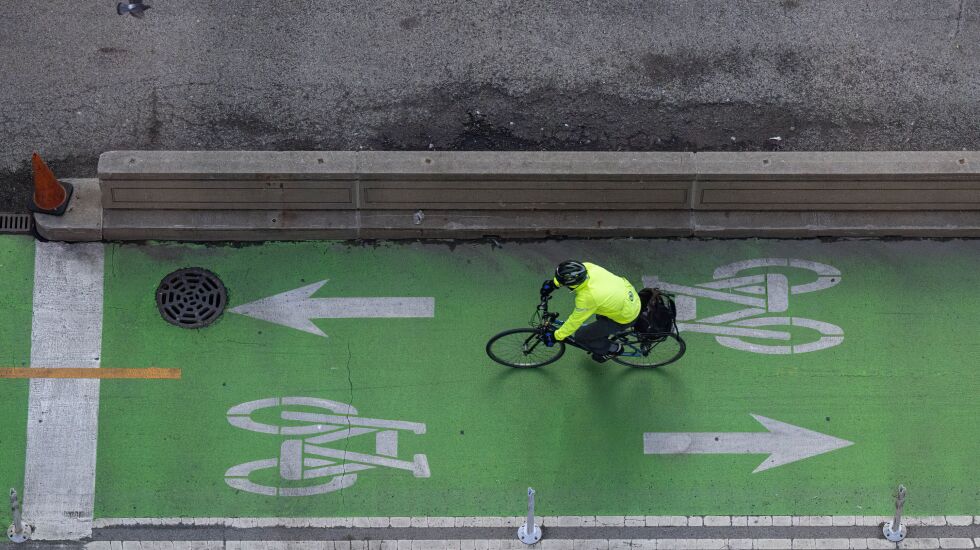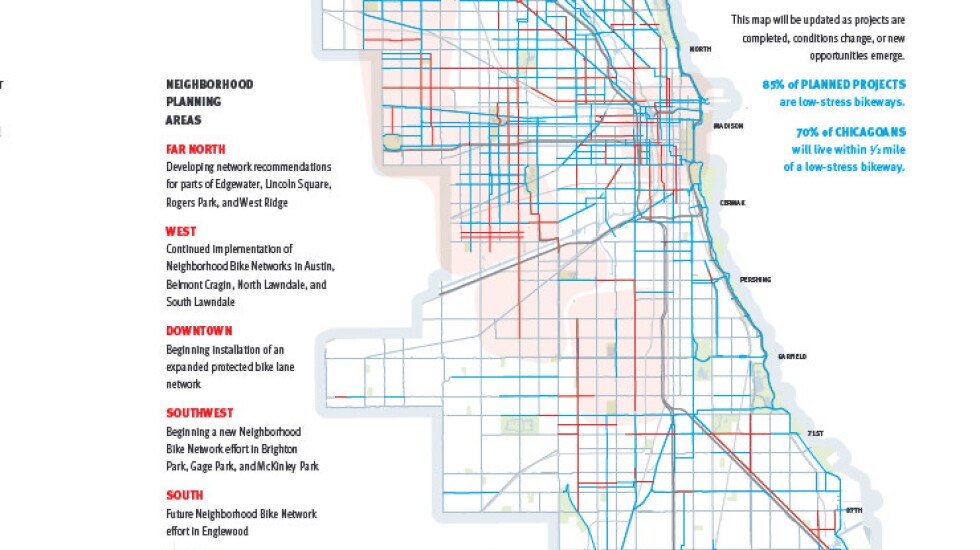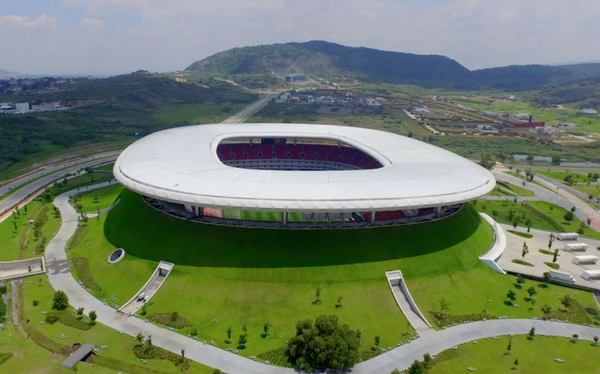
The Chicago Department of Transportation on Wednesday released a strategic “vision” on how to make roads safer for cyclists in the coming years, including adding 150 miles of new and upgraded bike lanes.
The blueprint, dubbed the Chicago Cycling Strategy, places an emphasis on creating a connected network of low-stress bike lanes between neighborhoods to establish continuous cycling routes across the city, CDOT said.
It also outlines increased community engagement efforts to better tailor cycling needs to each neighborhood.
“We’ve set a vision for the next 150 miles of bikeways in our city and, more importantly, have outlined the practiced methods that will help us get there,” CDOT Commissioner Gia Biagi said in a statement.
Low-stress bicycle infrastructure includes protected bike lanes, neighborhood greenways and off-street trails. Of the new projects, 85% are protected bike lanes and neighborhood greenways, CDOT said.

The department said funding for the projects “has been identified,” but it did not offer a timeline on the strategy, saying it plans to add the 150 miles of new lanes “in the next few years.”
The plan includes a map of the identified projects, but their status varies from under construction to early outreach within the community.
Christina Whitehouse, founder of the advocacy group Bike Lane Uprising, said she isn’t hopeful that the department will get the chance to implement the strategy given that a new mayor will occupy the fifth floor of City Hall in a few weeks.
“Having a document like this being released weeks before the mayor is leaving office doesn’t really seem helpful,” Whitehouse said. “There’s really not a lot of concrete plans.”
Whitehouse added that new mayors often prefer to appoint their own commissioners to departments, meaning Biagi may be replaced before any progress is made on the strategy.
“The likelihood that this document is going to be helpful for the next administration is pretty low,” Whitehouse said. “I don’t have a lot of high hopes for anything coming out of that document.”
CDOT said several of the new routes will be installed this year on the West, Southwest and South sides. The department has also begun to upgrade all existing protected bike lanes with concrete curbs. Moving forward, concrete curbs will be the default barrier when new protected lanes are installed, according to CDOT.
The department also said that it will build neighborhood bike networks to help support local bike trips through the expanded infrastructure.
The networks are “a community-driven approach to expanding our bikeway network. It is focused first and foremost on cultivating relationships and building trust between CDOT and the community,” the department said.
Alex Perez, of the Active Transportation Alliance, which advocates for transit, said the strategy will help neighborhood officials identify specific locations for new bike lane projects in the future.
“It’s a blueprint to show the community, show alderman, show elected officials what the network could be like and identifying potential projects,” Perez said.
CDOT also said the strategy was different from past planning efforts, adding that it will guide implementation of the bike lane network moving forward.
Implementation of the projects will result in 70% of Chicago residents living within half a mile of a low-stress bike way, according to the department.
Chicago’s network of bicycle infrastructure currently includes more than 420 miles of protected bike lanes, neighborhood greenways and other bikeways, CDOT said.
Whitehouse said she will believe in the department’s “vision” when she sees it in action.
“There’s a difference between saying what you’re going to do and having your heart in the right place and not actually being able to execute on it,” Whitehouse said.







